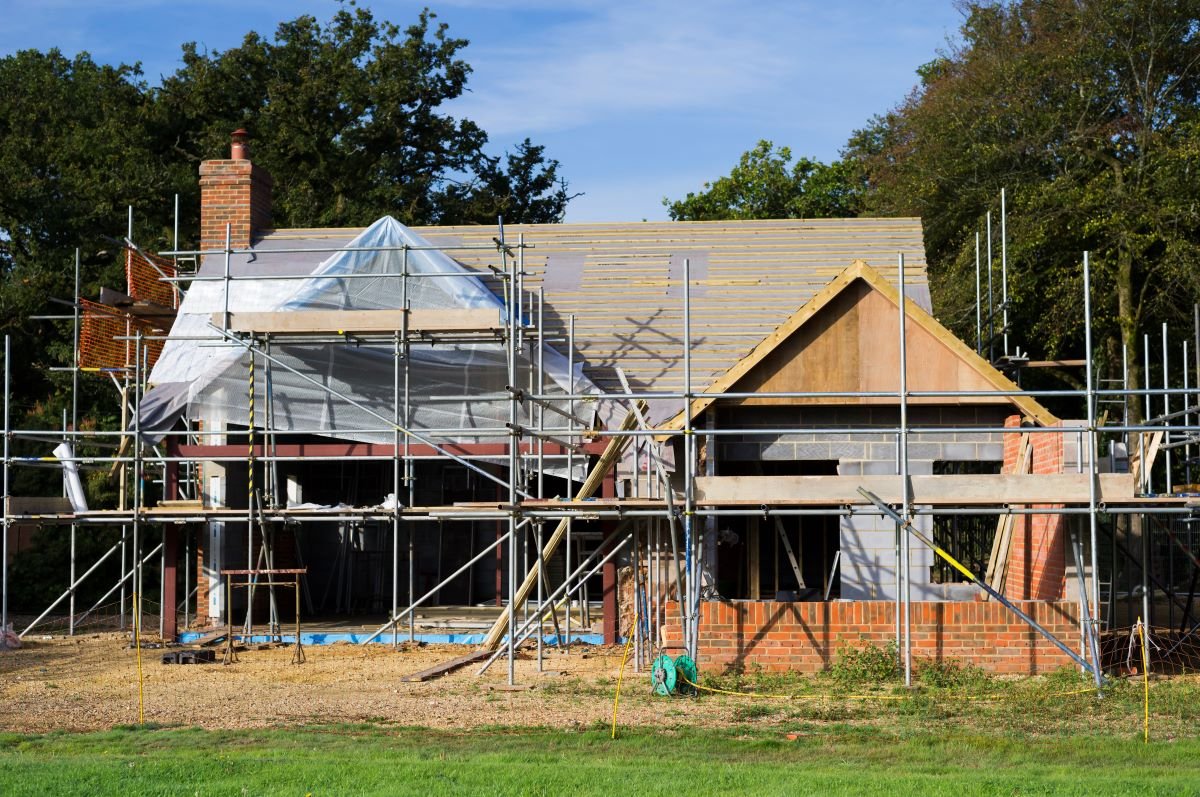Connecting a Straw Bale Home Addition to an Existing House
Why Build a Straw Bale Home Addition?
A straw bale home addition is an excellent way to expand your living space while improving insulation, energy efficiency, and sustainability. Whether you're adding a new room, expanding a living area, or even creating a standalone structure, straw bale construction provides a durable, eco-friendly, and potentially cost-effective solution.
However, ensuring a strong, correctly detailed connection between the existing house and the new straw bale structure is crucial. Let’s explore considerations and best practices for attaching a straw bale home addition, whether you’re using an infill system or a load-bearing straw bale wall.
(Please note: If you are in doubt about your addition design or implementation, get a design or engineering professional on your team early to help identify construction details to use, design choices for the unique site, and connection to existing structure.)
Attaching an Infill Straw Bale Home Addition
If your straw bale home addition is designed as an infill structure—meaning the bales serve only as insulation and wall material, not structural support—the process of connecting it to the existing house is relatively simple.
Steps for Connecting an Infill Addition:
1️⃣ Attach the Frame to the Existing Structure:
Secure the wooden frame of the addition to the existing home using nails, lag screws, or brackets.
Ensure a strong, stable connection at all structural points.
2️⃣ Transitioning Exterior Siding:
If the new wall is a straight extension, consider plastering the entire wall surface for a seamless look.
Alternatively, use a trim piece to create a clear visual transition between the old and new sections.
Pro Tip: "If you can't hide it, make it show"—use intentional design elements to enhance the appearance.
3️⃣ Ensuring Shear Resistance:
If the connection is in a straight run, extend shear resistance materials from the new structure to the existing home.
If the addition connects at a corner, additional shear transfer material may not be necessary, as corners typically provide natural stability.
Attaching a Load-Bearing Straw Bale Home Addition
If your straw bale home addition is load-bearing, meaning the bales support the weight of the roof and structure, you will need a different attachment method.
Key Connection Points for Load-Bearing Additions:
✔ Toe-Ups: Secure the new straw bale walls to the toe-ups (the base platform that elevates the bales off the foundation).
✔ Box Beams: Connect the top of the straw bale wall to a box beam that ties into the existing structure.
✔ Structural Integrity: Ensure shear resistance and load transfers are properly addressed at the junction of the two structures.
✔ Consult an Engineer: Work with an engineer to ensure proper structural and shear load distribution between the existing house and the new addition.
Benefits of a Straw Bale Home Addition
🏡 Enhanced Insulation: Straw bale walls provide excellent thermal performance, reducing energy costs.
🌱 Eco-Friendly Construction: A straw bale home addition uses renewable, natural materials, making it a sustainable building choice. (Who doesn’t love walls that can be composted at the end of their lifespan?!)
🔨 Customizable Design: Straw bale walls can be easily shaped, plastered, and finished to match your existing home or add an artistic flair.
💰 Cost Savings: With lower material costs and energy efficiency benefits, a straw bale addition can be a budget-friendly expansion option if you are investing your labor.
Final Thoughts: A Strong, Sustainable Home Expansion
Building a straw bale home addition is a practical, beautiful, and sustainable way to expand your home. Whether you’re opting for infill or load-bearing construction, making the right connections between old and new is key to ensuring a safe and long-lasting structure.
Bale on!
Timbo
PS. The details around connecting the new straw bale home addition to the existing structure are something you want to get right. Depending on the existing structure and design of the addition, they can be easier or more complex.
If you hit a snag or want to get ahead of a tricky spot, book an hour-long consultation with me, and I’ll help get you a working solution.
Want to learn more about straw bale homes and how to build one? Want to do so for FREE?
Sign up for our totally free 16 Day Straw Bale eCourse!
Updated 3/2025
